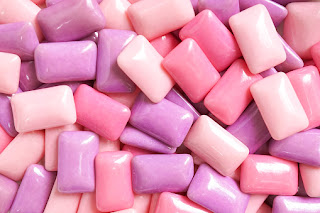Artificial Plants Key Market Players by Product and Consumption, and Forecast 2028
Artificial Plants Market Overview
A four-year compound annual growth rate of a CAGR of 4.15
percent is expected between 2021 and 2028 for the artificial plants market,
which is supposed to hit USD 780.3 million. It is also known as a fake plant or
a fake plant. Parchment, silk, paper, polyester, rubber, cotton, and other
materials make these plants. Due to the cheap cost and easy accessibility of
the raw resources, polyester is a popular choice among makers of fake plants.
Even business and residential environments may benefit from artificial plants.
Customers love them since they add beauty to the environment and don't need any
upkeep in any conditions.
Artificial plants are becoming more popular for interior
decorating, both in the home and in the workplace, since they need little to no
upkeep. As a result, fake plants are in high demand in the residential and
commercial sectors. The millennial generation, in particular, is known to favor
easy-to-use decorative accents like fake plants. The industry for artificial
plants is also driven by the reproduction of rare, attractive plants that are
difficult to obtain or sustain in varied weather conditions.
The artificial plants market has decreased due to the
closure of shopping centers, cafés, specialized shops, supermarkets,
workplaces, and tourist attractions. In addition, as a result of COVID-19,
retail firms are shifting their focus to online platforms and reducing their
brick-and-mortar presence. As a result, COVID-19 has significantly impacted
many businesses and supply chains.
Competitive Dashboard
The artificial
plants key market players are The Green House (India), Treelocate Ltd.
(UK), Sharetrade Artificial Plant and Tree Co. Ltd. (China), International
Plantworks (US), Nearly Natural (US), J. S. Flower Company Limited (Thailand),
Commercial Silk Int'l & Plantscape Inc (US), China Silk Flower Factory
(China), GreenTurf (Singapore), International TreeScapes, LLC (US) and more.
Most of the firms work on bolstering their local and global
presence, for which they introduce newer and more sophisticated products. The
primary strategical measures undertaken by these players include agreements, partnerships,
and collaborations.
To illustrate, SYNLawn, the biggest developer of artificial
grass in the North American market, will be debuting its exclusive EnviroLoc+
Backing System. This soy-based backing technology contains an impressive
anti-algae and anti-fungal component, which helps foster the lifespan of the
artificial grass
Market Segmentation
According to this analysis, the worldwide artificial plants
market is divided into four main categories: product type, material type;
end-user; and distribution channel.
Plants and trees of all shapes and sizes and stem blossoms
and grass are all included in the study. Plants and trees as a whole dominate
the worldwide artificial plants market since they enhance the visual
attractiveness of an area without needing any money or resources to be spent on
upkeep.
Non-Store-Based and Store-Based distribution channels exist.
In light of the growing prominence of e-commerce and corporation websites, the
non-store-based marketing intermediaries dominate the worldwide market. In
addition, businesses and consumers are increasingly using offline methods for
selling and purchasing fake plants because of growing internet use.
Regional Classification
Artificial
plants market may be broken down geographically into five central regions:
the North American region, the European region, Asia Pacific, the Middle
Eastern part, and South American region. Artificial plants Market share is expected
to dominate the European and North American areas because of the high-end
commercial customers in these areas, such as amusement parks and international
airports.
In 2020, North America was expected to have the most
significant share of the worldwide artificial plant market, accounting for more
than half of sales. North America is the world's largest market for fake
flowers and plants, and they are employed in a variety of celebrations and
events. Sophisticated technology is used to create artificial plants that
closely mimic natural ones. Manufacturing fake plants using cutting-edge
technology is commonplace in the United States and Canada.
Industry News
According to Afloral.com, a leading online flower retailer,
200 new dried flowers and conserved grasses were added to the company's online
store during September 2019 in response to the growing demand for the home
décor and wedding flower markets.
NOTE: Our Team of Researchers are Studying Covid19 and
its Impact on Various Industry Verticals and wherever required we will be
considering Covid19 Footprints for Better Analysis of Market and Industries.
Cordially get in Touch for More Details.
Contact us:
Market Research Future (part of Wantstats Research and
Media Private Limited),


Comments
Post a Comment